Los Angeles Port is located on the west coast of the United States, Los Angeles, California. It is the gateway port for U.S. trade with China, and it is the No. 1 U.S. port for trade cargo between China and the United States.
The Port of Los Angeles provides employment opportunities for 529,000 local people and 1.6 million people worldwide. Goods entering the port account for about 20% of all goods entering the United States.
In 2018, the container handling capacity of the Port of Los Angeles was 9.4 million TEU.
In 2019, the cargo volume of the Port of Los Angeles was 178 million tons.
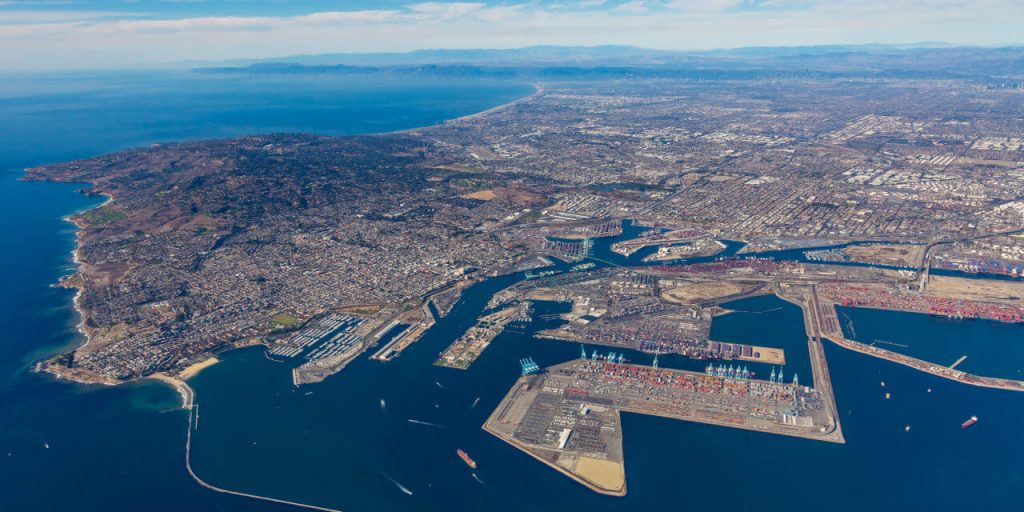
History
Origin
- October 8, 1542: Portuguese explorer Juan Rodriguez Cabrillo discovered San Pedro Bay’s natural port and named it “Smoke Bay”.
- 1769: Spanish missionaries began to preach on the west coast of the United States, and the San Pedro Bay area began to be influenced by modern civilization.
- The 1800s: San Pedro received its first commercial investment. The first American trade ship to dock in San Pedro was Lelia Bryd.
- 1897: Congress declared San Pedro Bay as the official port of Los Angeles.
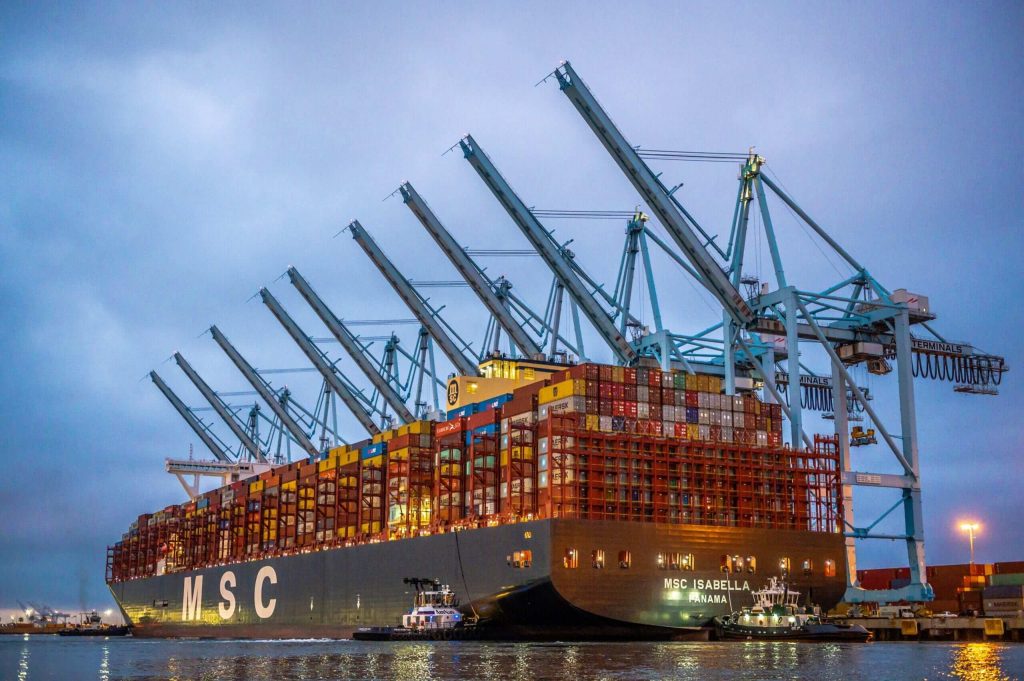
Port is born
- December 9, 1907: The Port Affairs Committee was established, marking the Port of Los Angeles’s official establishment.
- August 28, 1909: The two cities of San Pedro and Wilmington were merged into the City of Los Angeles, making the Port of Los Angeles an official department of the City of Los Angeles.
- Early 1900s: Various industries began to emerge in the port and its surrounding areas.
- 1912: The main channel of the port was widened, allowing the port to accommodate larger ships. In 1912, the South Pacific Railway built the first large terminal at the port.
- The 1920s: The port surpassed San Francisco to become the busiest port on the West Coast.
- Early 1930s: The port was expanded on a large scale, and a two-mile breakwater was built three miles away. In addition to the external breakwater construction, an internal breakwater was built outside of Terminal Island, with a dock for sea ships in the harbour and a smaller dock built on Long Beach. It was this improved port that hosted the sailing competitions of the 1932 Summer Olympics.
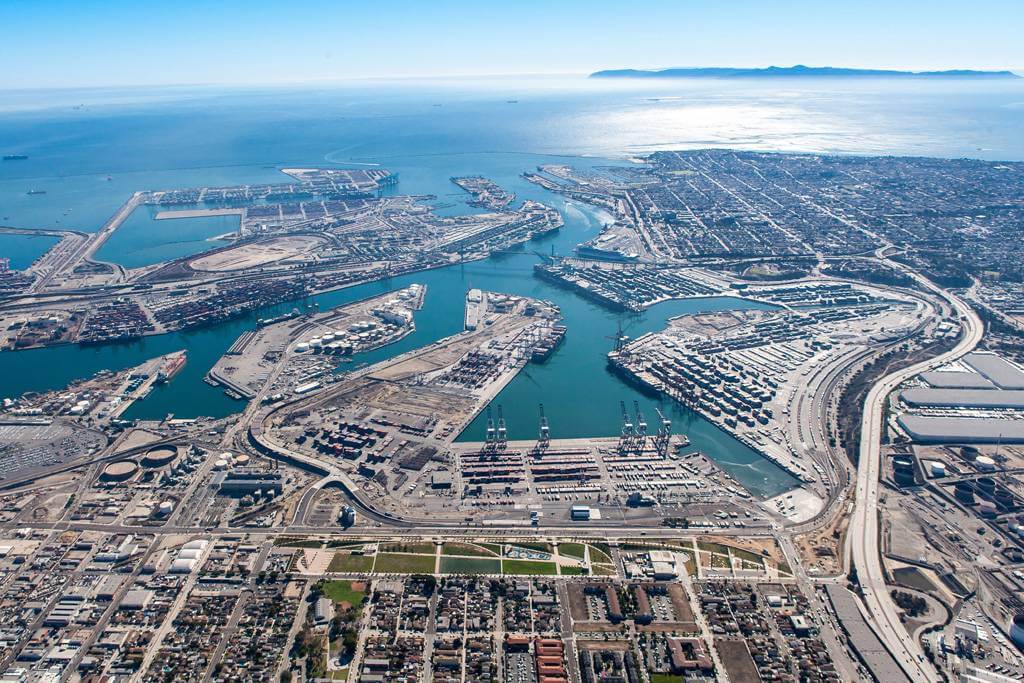
During World War II
- In the Second World War, the port was mainly used for shipbuilding and employed more than 90,000 people. 1959: Hawaiian Merchant of Matson Navigation Company delivered 20 containers to the port, thus beginning the port’s transformation to containerization.
- 1963: The Vincent Thomas Bridge opening greatly improved access to the terminal island, increased traffic and further expanded the port.
Port today
- 1985: The port handled 1 million containers per year for the first time.
- 2012: The port’s main navigation channel is deepened to 53 feet, which can accommodate the draught of the world’s largest container ship.
- 2013: More than 500,000 containers pass through the port every month.
- In 2018, the port’s container handling capacity was 9.4 million TEU.
- In 2019, the cargo volume of the port was 178 million tons.
Since 2000, the Port of Los Angeles has been the largest in the United States for container throughput and cargo value.
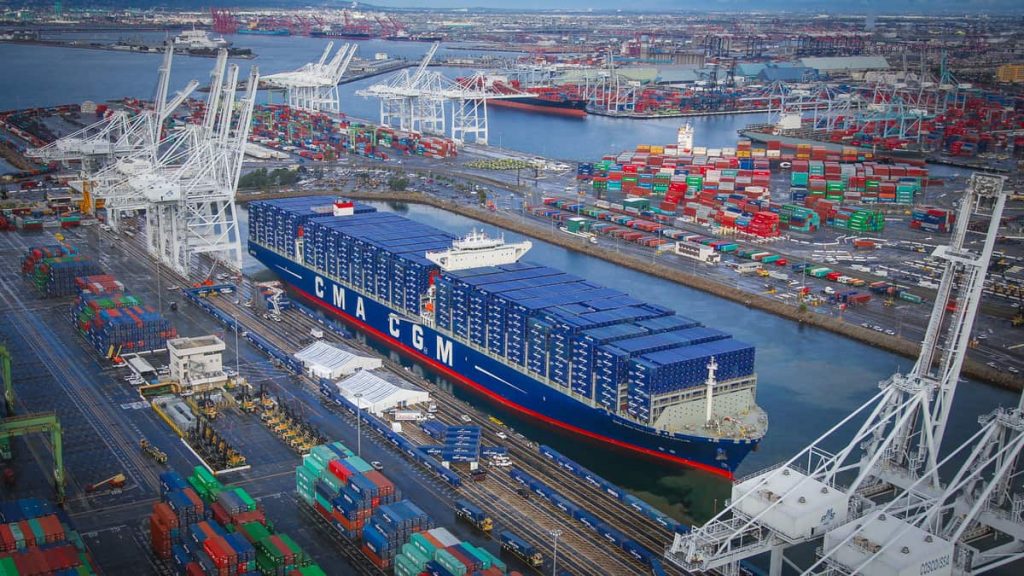
Port facilities
The port’s channel depth is 53 feet (16 m). The port has 25 freight terminals, 82 container cranes, 8 container terminals and 113 miles (182 kilometers) of terminal railway.
Transport
In 2019, the port’s container volume was 9.3 million 20-foot equivalent units (TEU), an increase of 5.5% from the 2016 record of 8.8 million 20 TEUs. This is the largest cargo carried annually by ports in the Western Hemisphere.
The main trading partners of the port in 2019 are:
- China (128 billion USD)
- Japan ($89 billion)
- Vietnam (21 billion USD)
- South Korea ($15 billion)
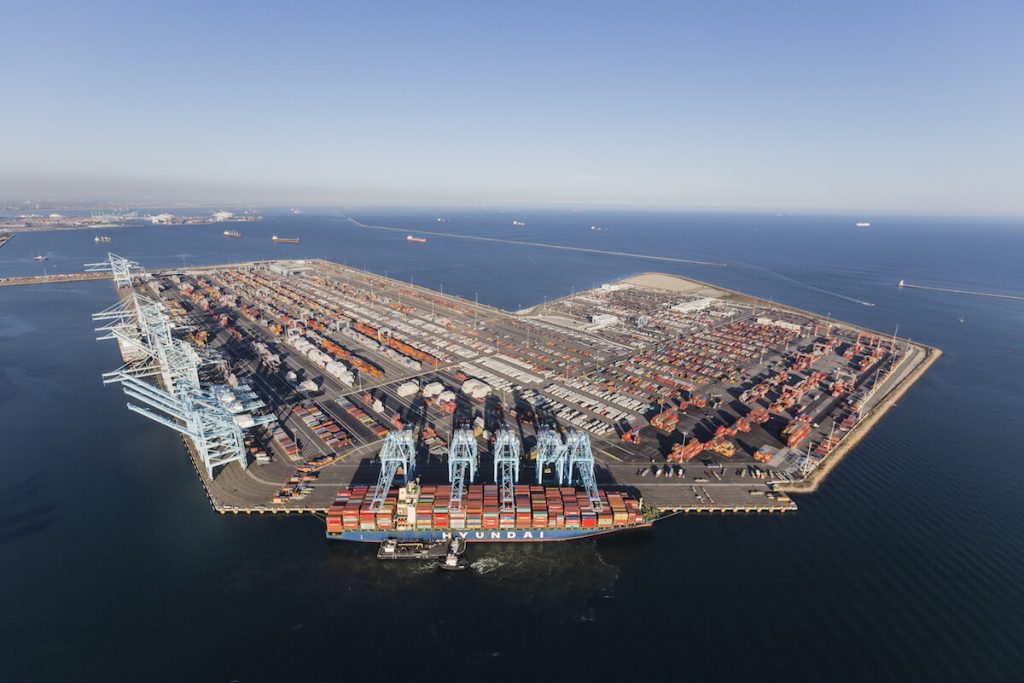
Los Angeles Port Data
- Country
- America
- Region
- North America
- Status
- In use
- Location
- Los Angeles, California, USA
- Official website
- portoflosangeles.org
- Opened
- Dec-09, 1907
- Size of port
- 3,200 acres (13 km2)
- Annual container volume
- 9.4 million TEU (2018)
- Annual cargo tonnage
- 178 million tons (2019)
View Los Angeles Port on Google Satellite Map
Google satellite maps allow you to see building details more clearly, including natural landscapes such as mountains, rivers, deserts, sea and man-made engineering buildings.
If you are very interested in this engineering building, it is a good idea to click below Google Map icon. We will help you jump to the corresponding location of this building or engineering on Google satellite map.






























































